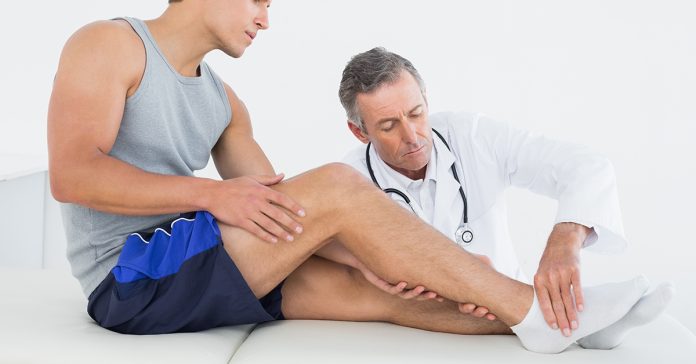Estimated reading time: 0 minutes
Knee pain that cannot be attributed to a physical injury may be the result of a lower back issue. The muscles surrounding the knees are stimulated by nerves originating in the lumbar vertebrae. Knee pain and/or paralysis are sciatica symptoms caused by irritation or compression of these nerves at their origin in the spine.
Continue reading to learn about the symptoms of sciatica knee pain, as well as common examples of lower back and other diseases that resemble sciatica knee pain.
Symptoms of sciatica may include knee discomfort.
When you have sciatica, the following knee symptoms may occur:
Warmth, severe pain, or a vague ache in the front, side, or back of the knee.
Impossibility of weight-bearing on the knee
Kneebuckling or bowing
Weakness when attempting to extend the knee and straighten the limb.
When knee pain is one of your sciatica symptoms, you may also experience pain in your buttock, thigh, calf, and/or foot. Because the pain typically affects only one limb at a time, sciatica knee pain does not typically affect both knees at once.
Sciatica is frequently caused by a lower back-related medical condition. These underlying conditions may affect your spinal discs, nerve roots, joints, or soft tissues such as muscles.
L4 Radiculopathy
Knee issues may be caused by compression of the L4 spinal nerve root (L4 radiculopathy) if you have sciatica. In the lower back, a herniated disc or spinal stenosis are two common causes of nerve root compression.
If the L4 nerve root is damaged, you may experience pain in the quadriceps and the lower leg.
Hamstring pull
Hamstring tightness, the group of muscles at the back of the thigh, is an additional potential cause of sciatica knee pain. When your hamstrings are tense, the stability of your lower back is compromised, the normal curvature of your lower spine is disturbed, and stresses accumulate within the spinal joints. 2
These alterations may cause discomfort and stiffness in the lower back, as well as pain radiating from the lower back into the knee and thigh.
If your knee pain is due to sciatica, your physician will typically treat the underlying cause. Self-care and medical treatment are frequently employed to alleviate sciatica symptoms. Popular medical treatments include analgesic medications, supervised physical therapy and exercise programmes, and/or epidural steroid injections.
Knee pain that could be misdiagnosed as sciatica
It is conceivable that your knee pain is due to something other than sciatica, such as a nerve or joint injury, despite the fact that it feels like sciatic nerve pain. Two such instances are presented below.
L4 Radiculopathy
Knee pain and paralysis may result from a lumbar herniated disc or lumbar spinal stenosis that compresses the L3 nerve root in the mid-back. You may also experience discomfort in your anterior thigh, hip, and groyne region.
Patellofemoral stress dysfunction
Patellofemoral stress syndrome (runner’s knee), a disorder in which the kneecap (patella) inappropriately rubs against the extremity of the thigh bone (femur), can cause a sharp, burning sensation around the kneecap’s borders.
Although this condition does not typically cause pain in other areas of the body, such as the thigh or calf, the hot, burning sensation and resulting weakness in the knee can be misconstrued for sciatica.
Consult a physician for a diagnostic evaluation if your knee pain does not improve with self-care, interferes with your daily activities, or worsens over time. Several back disorders that produce sciatica may also cause knee pain, so be sure to report all of your symptoms to your doctor. This will aid your doctor in locating the underlying cause.
Related-
Know more about Ayurvedic Spinal Disk & Radiculopathy Treatments.
GET IN TOUCH


Recent comments